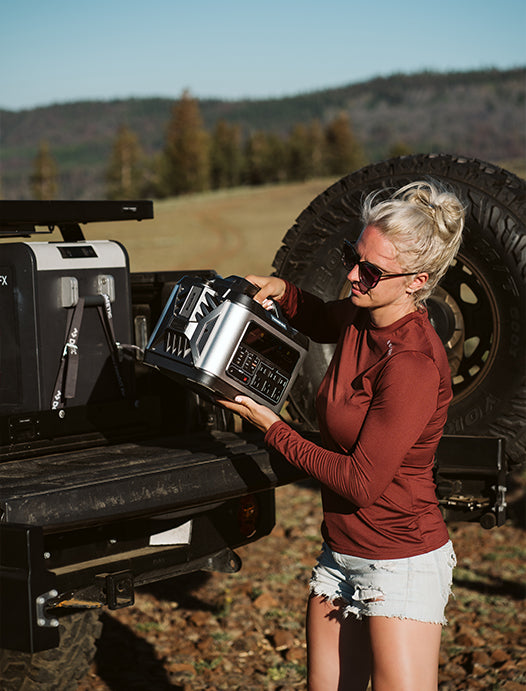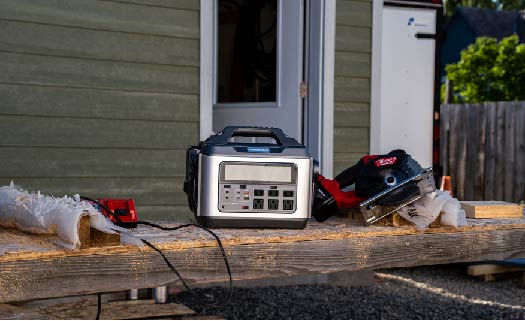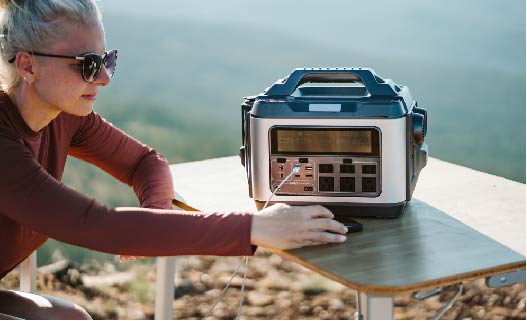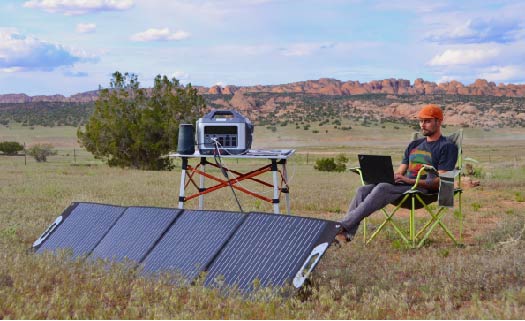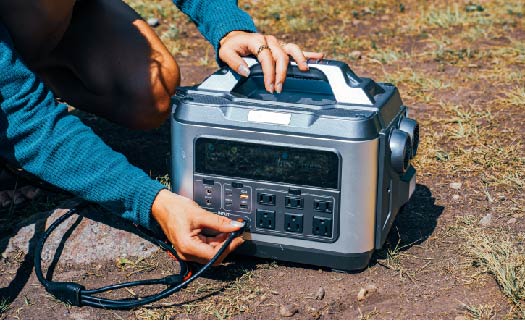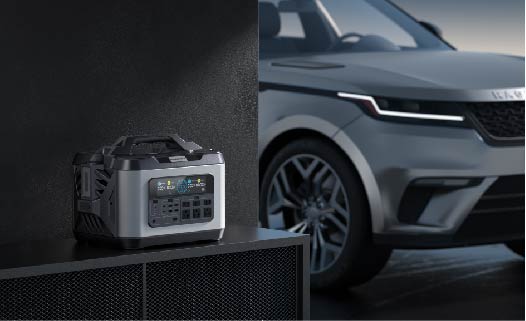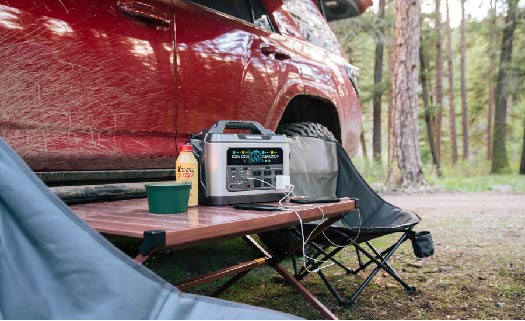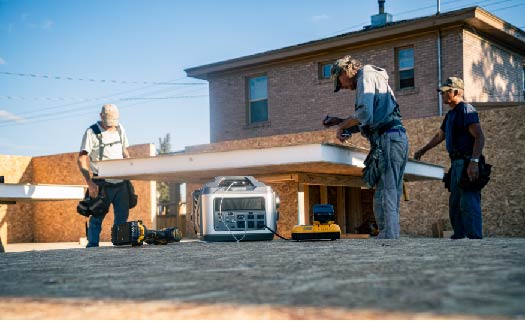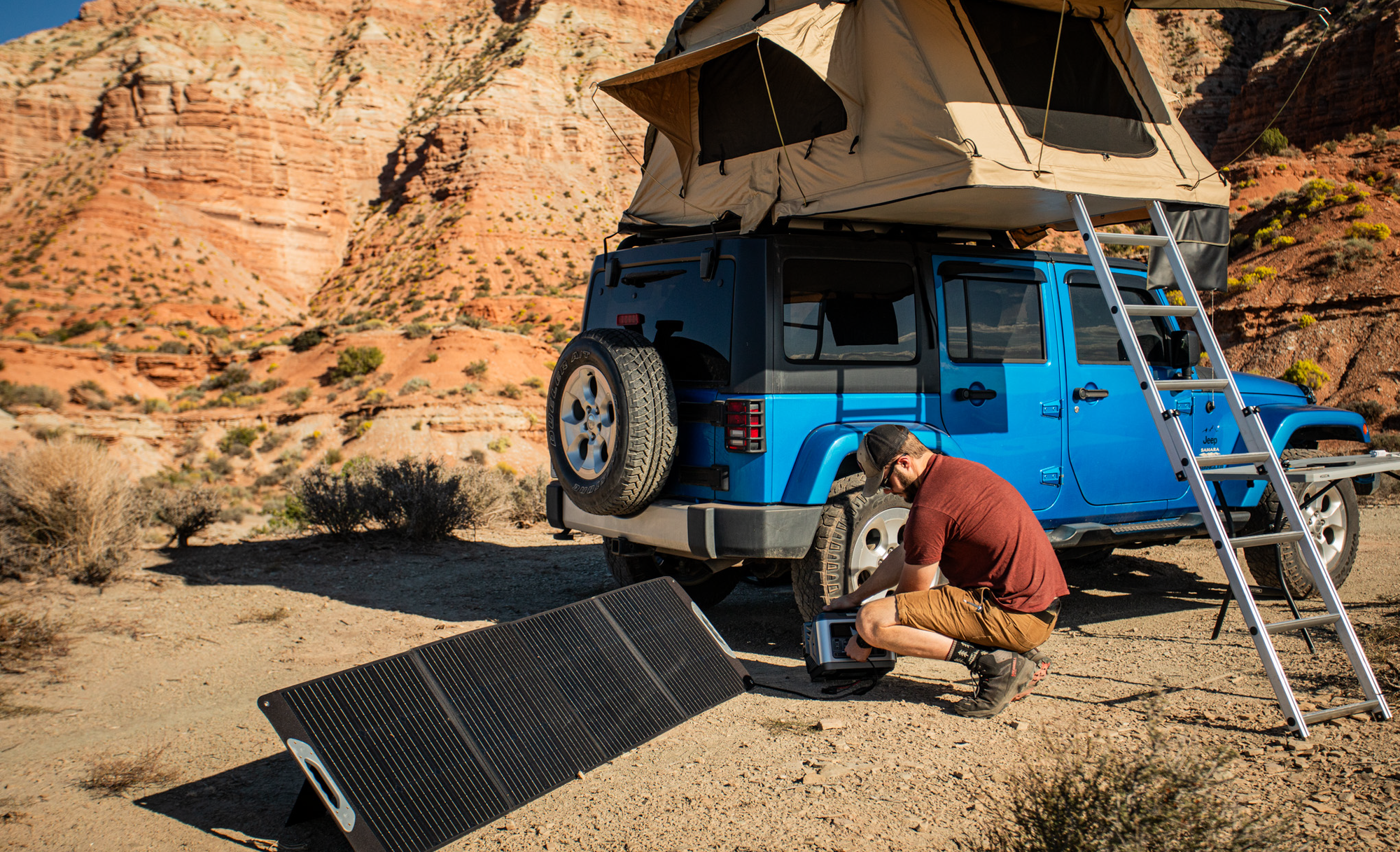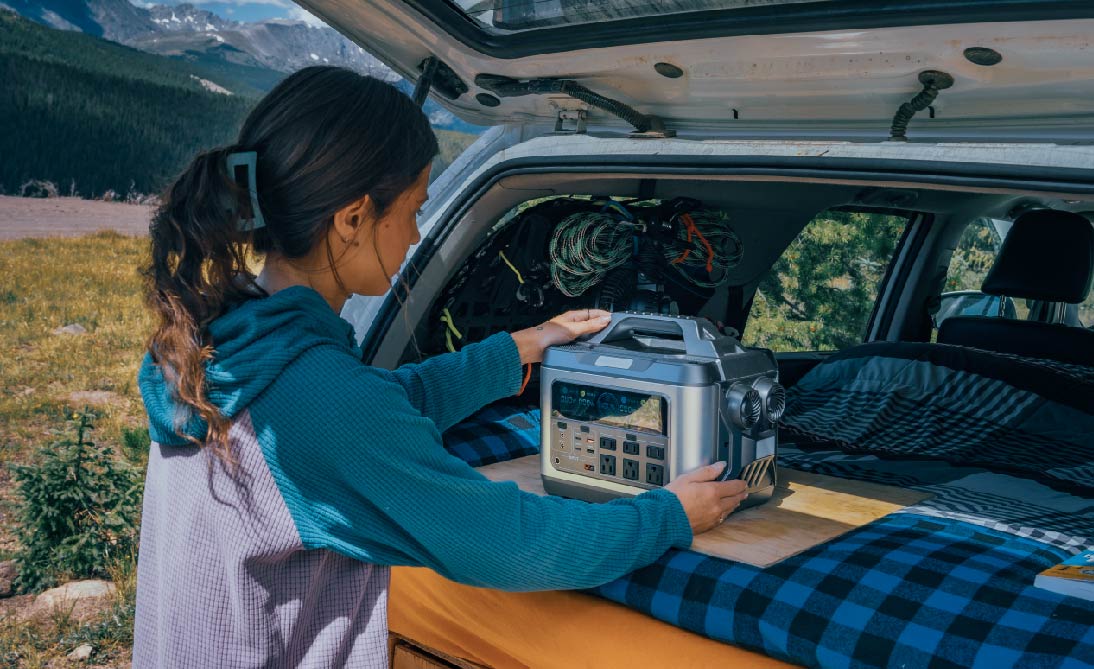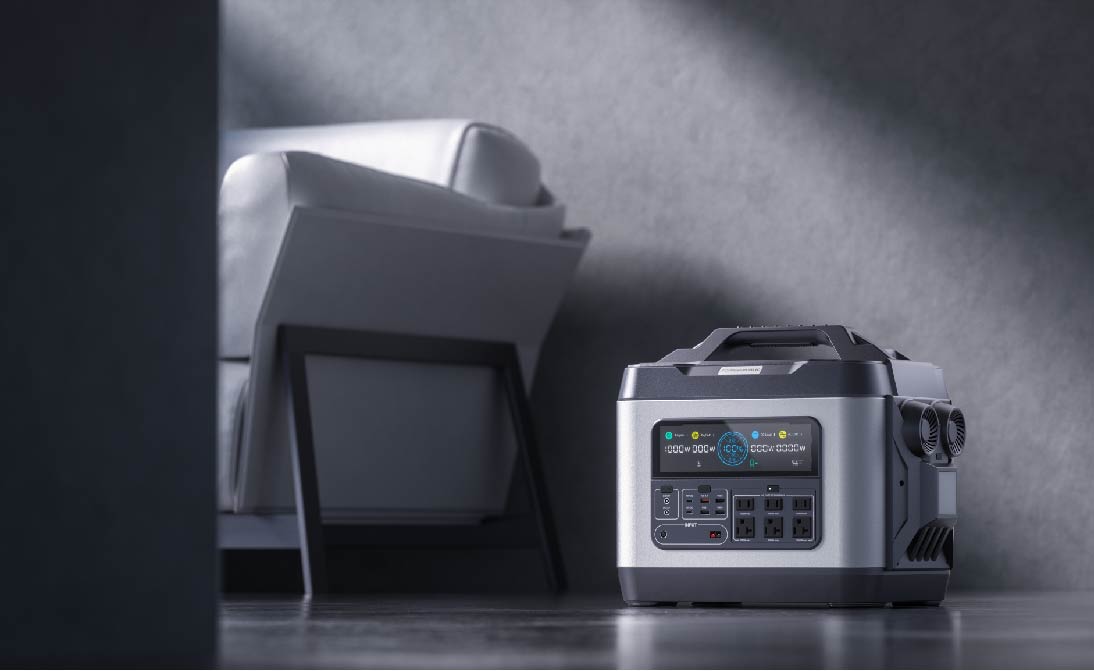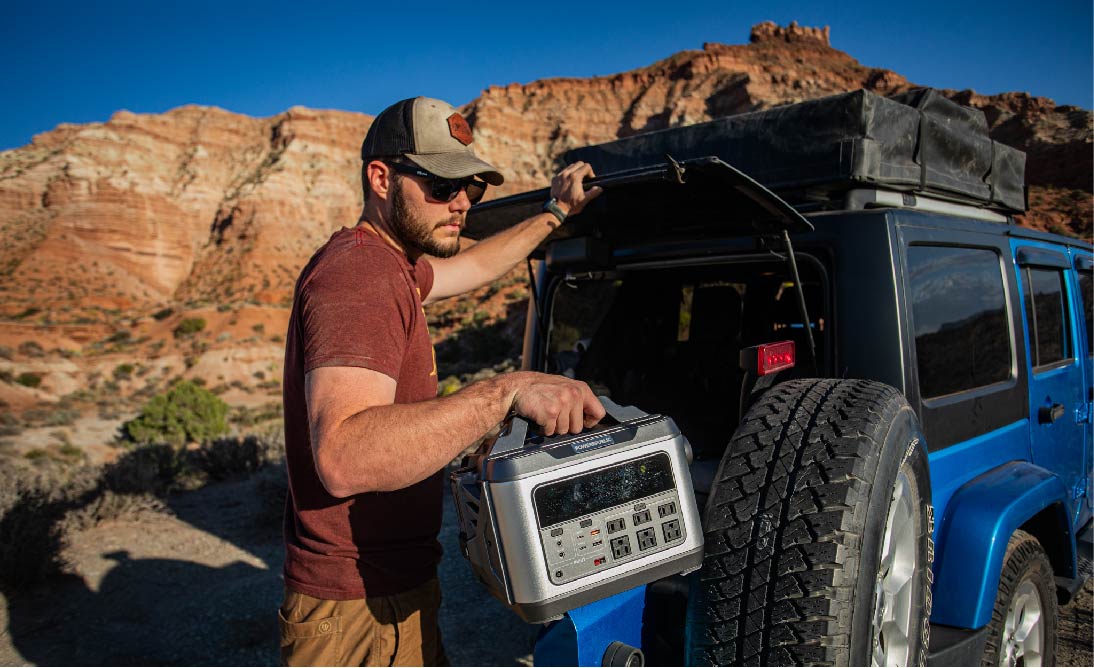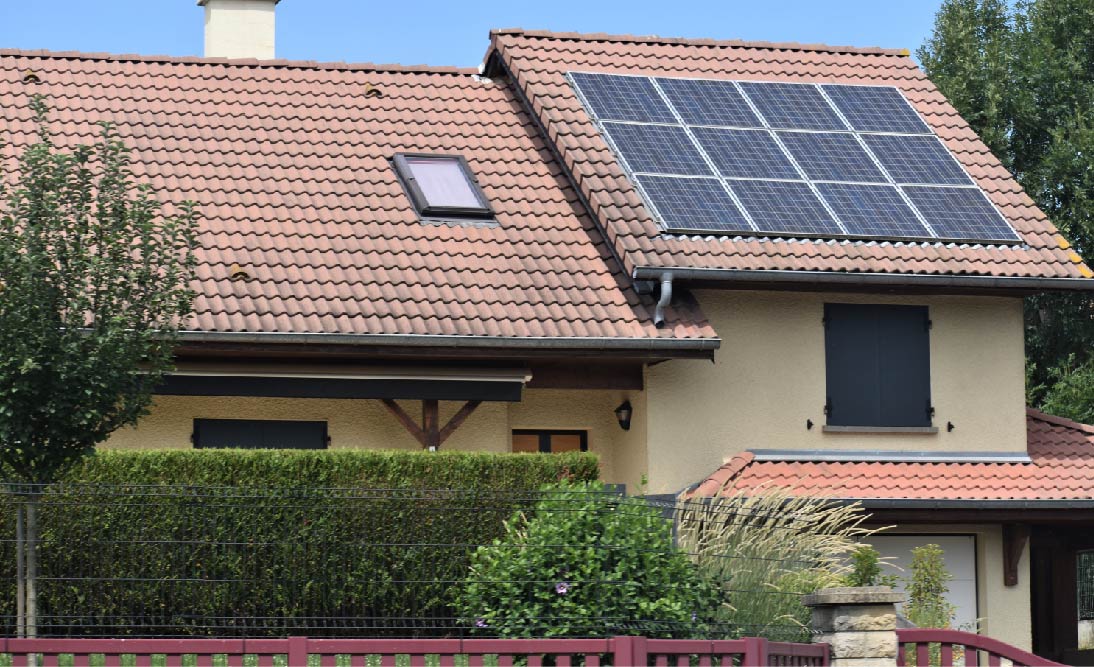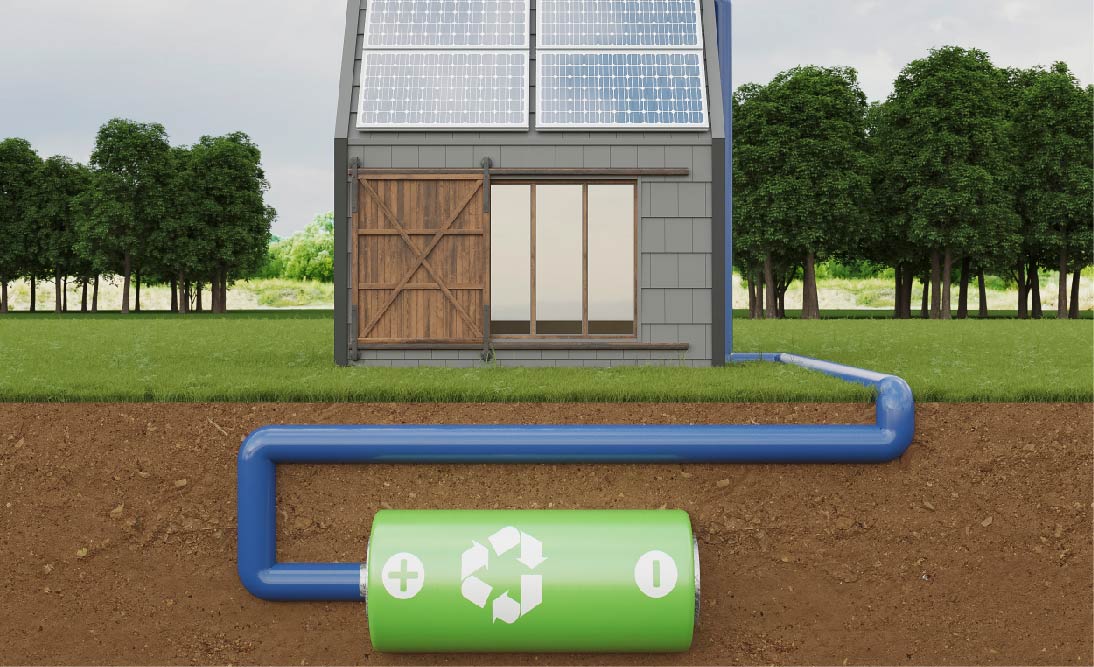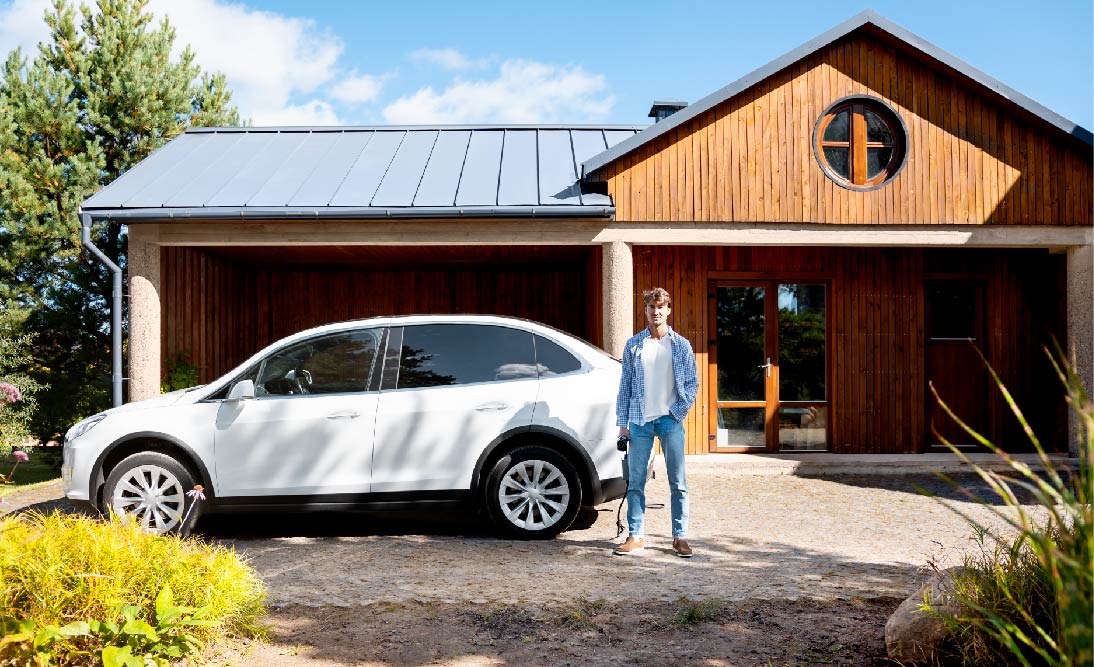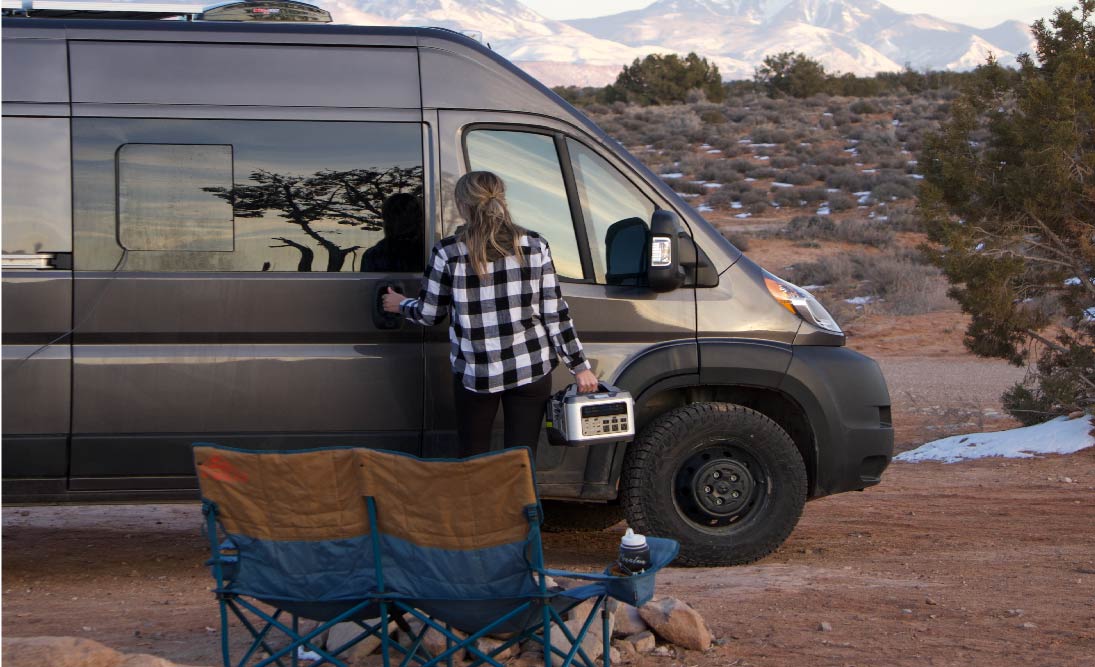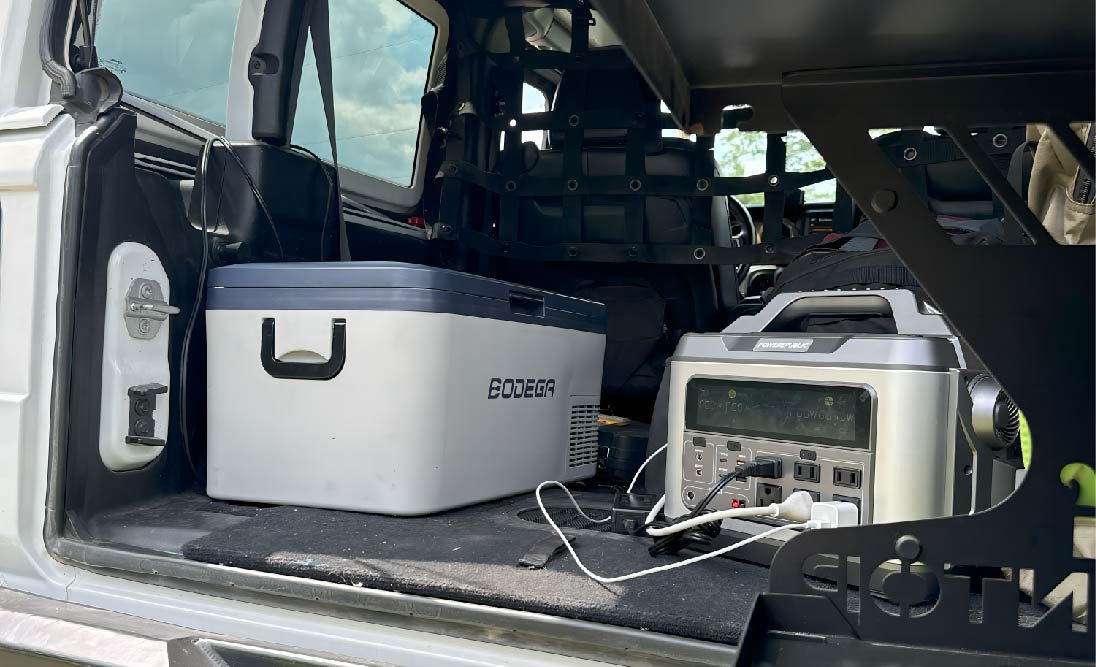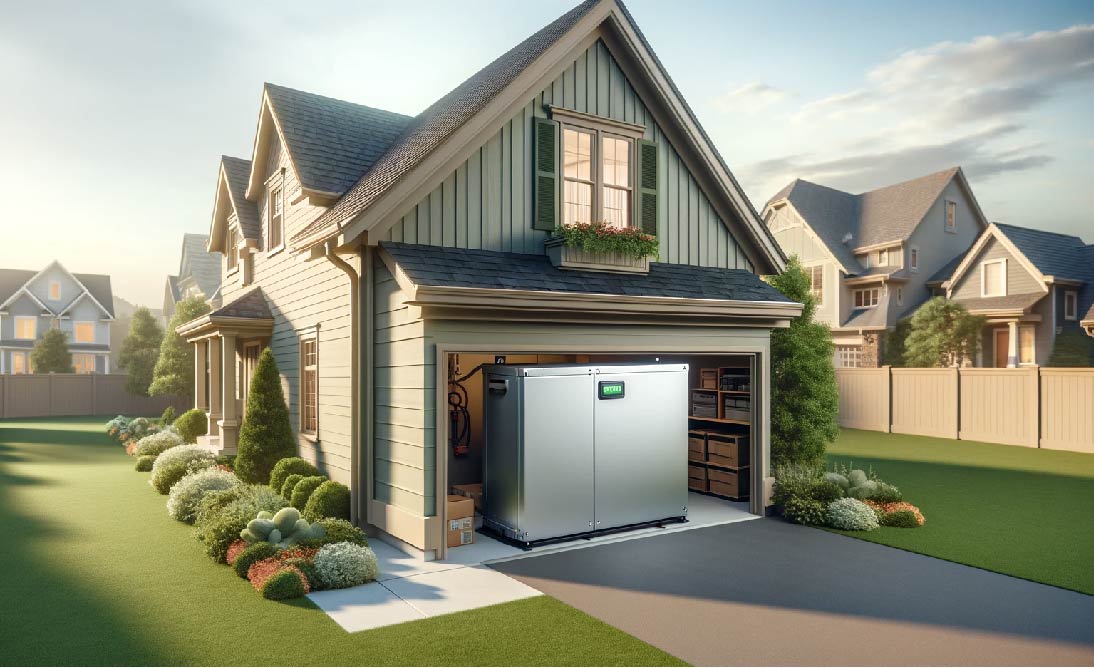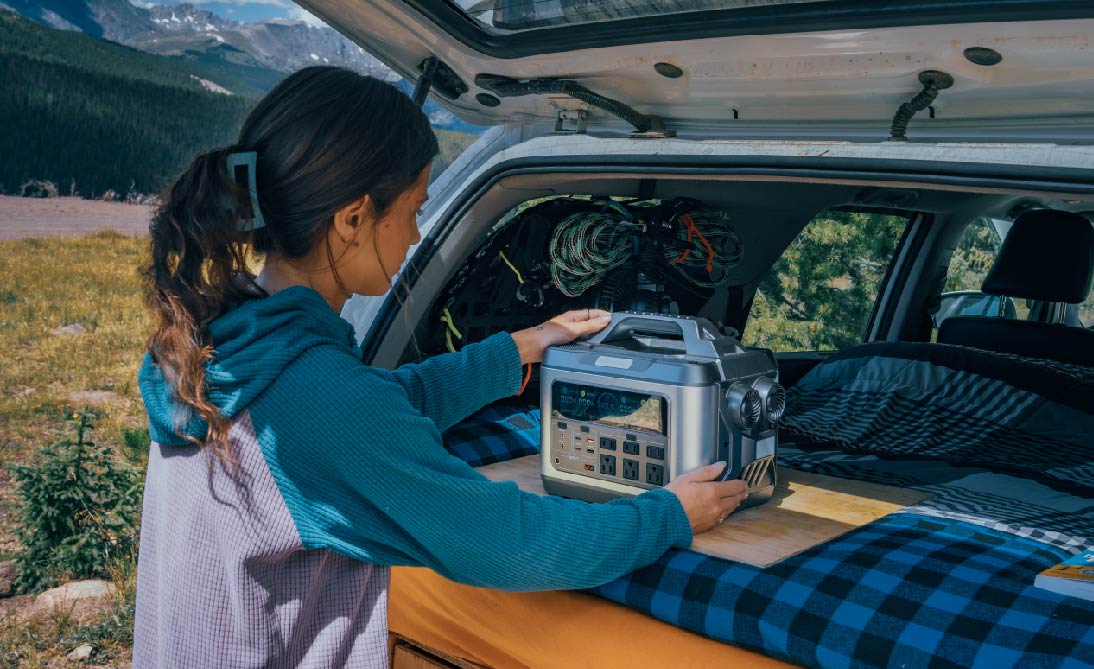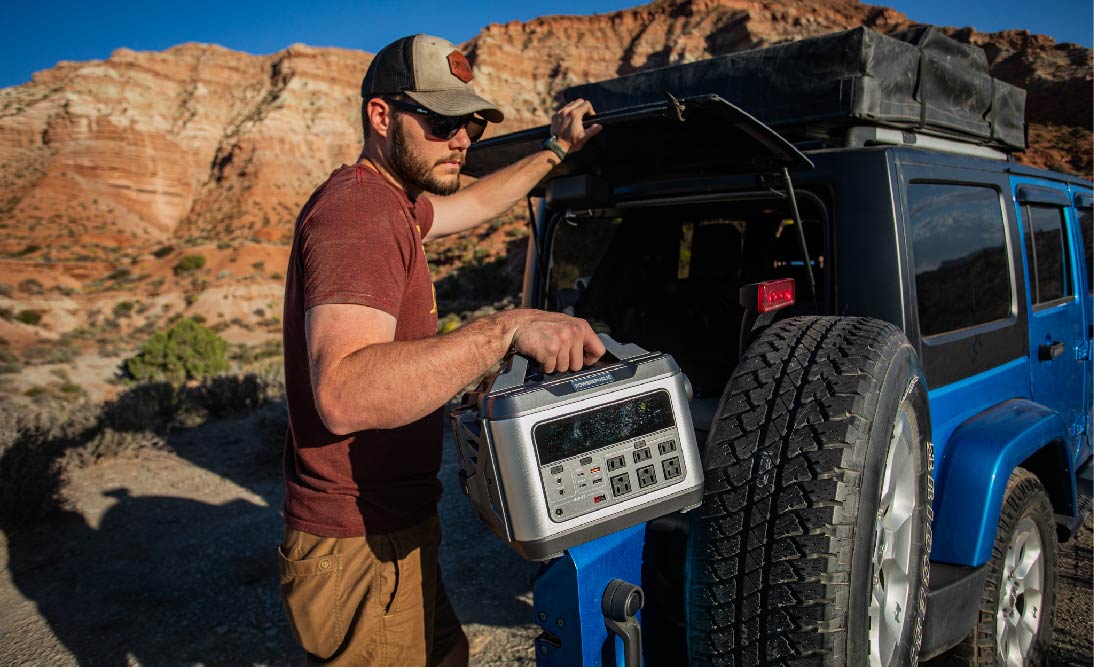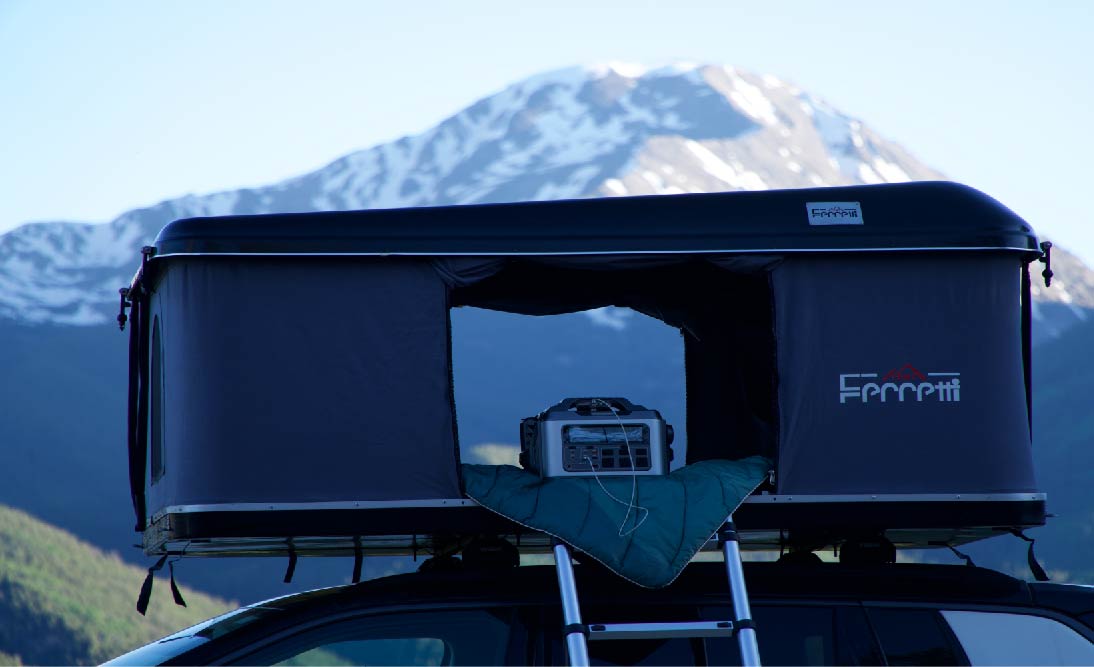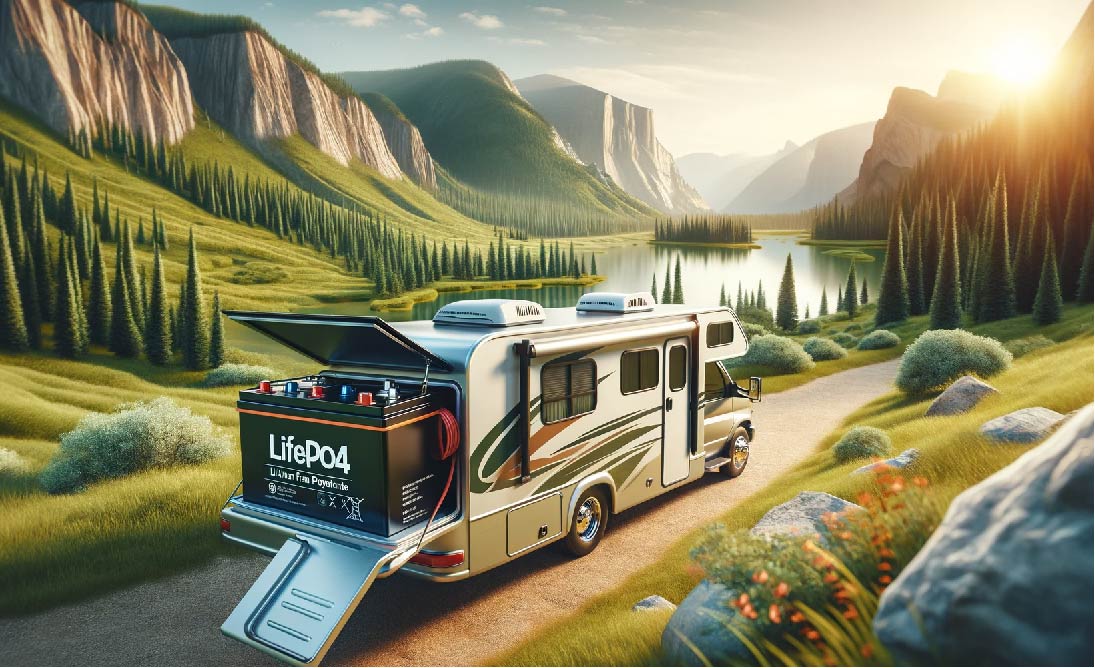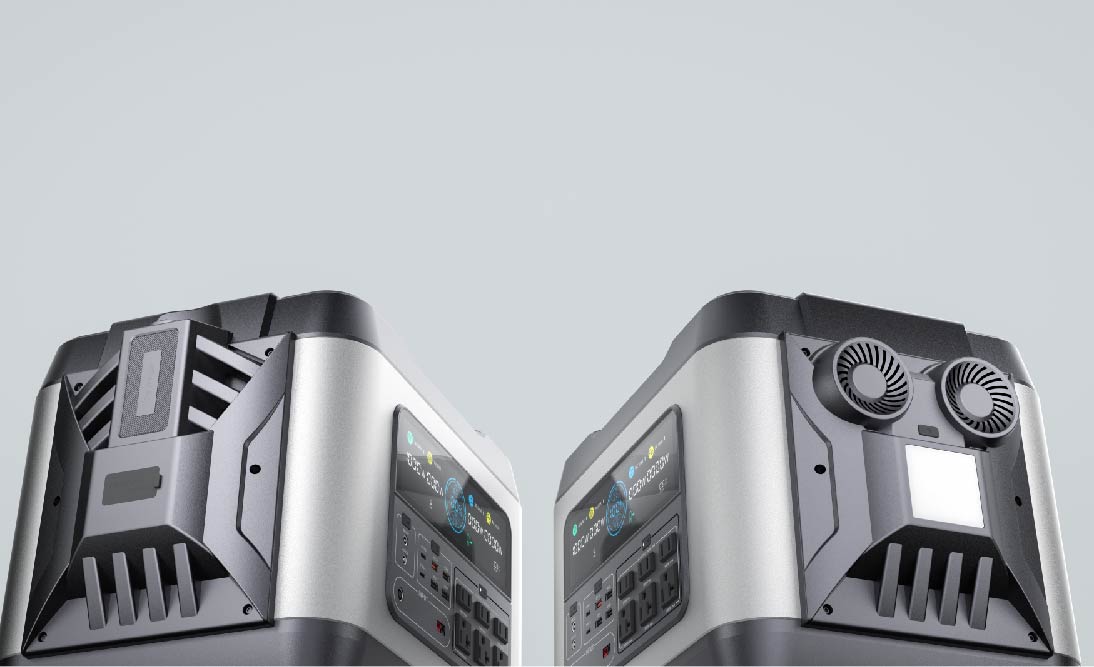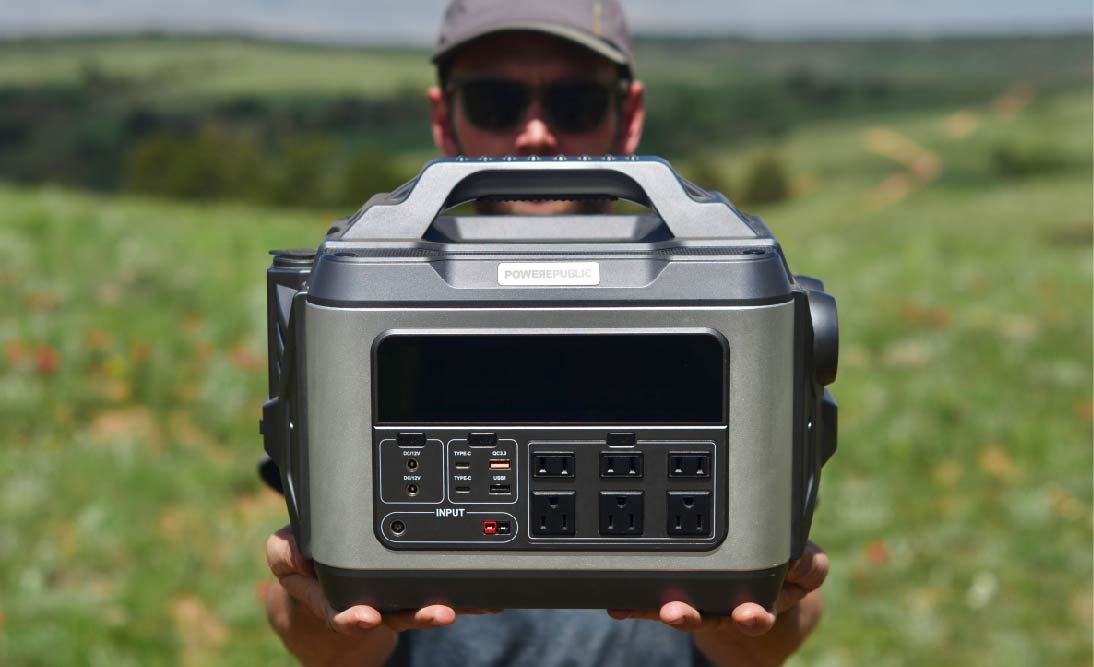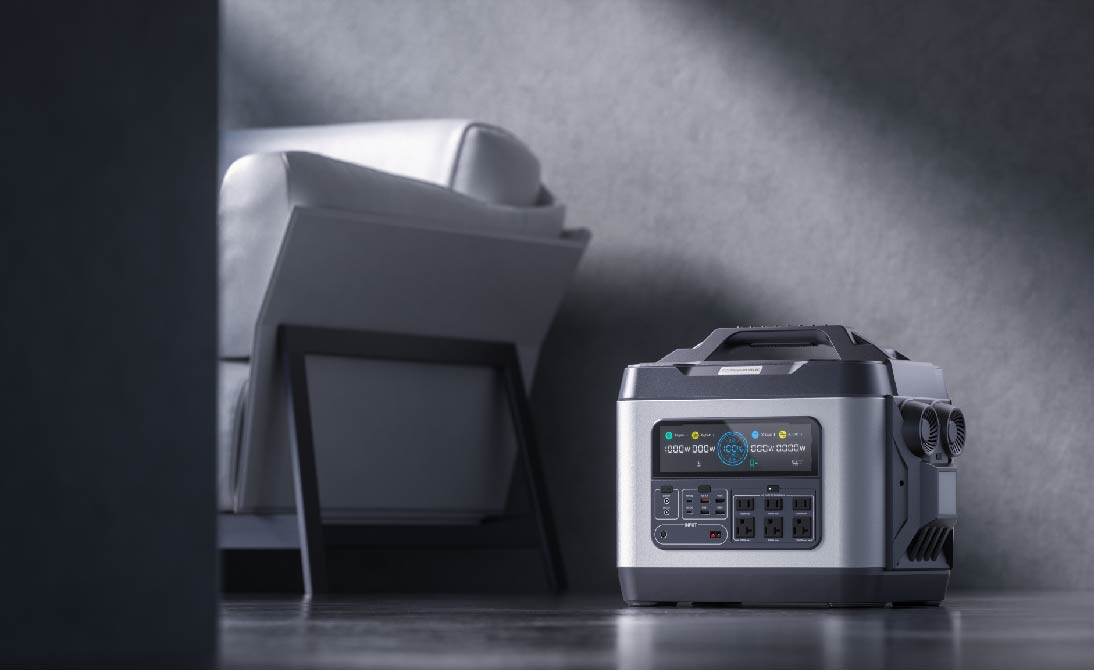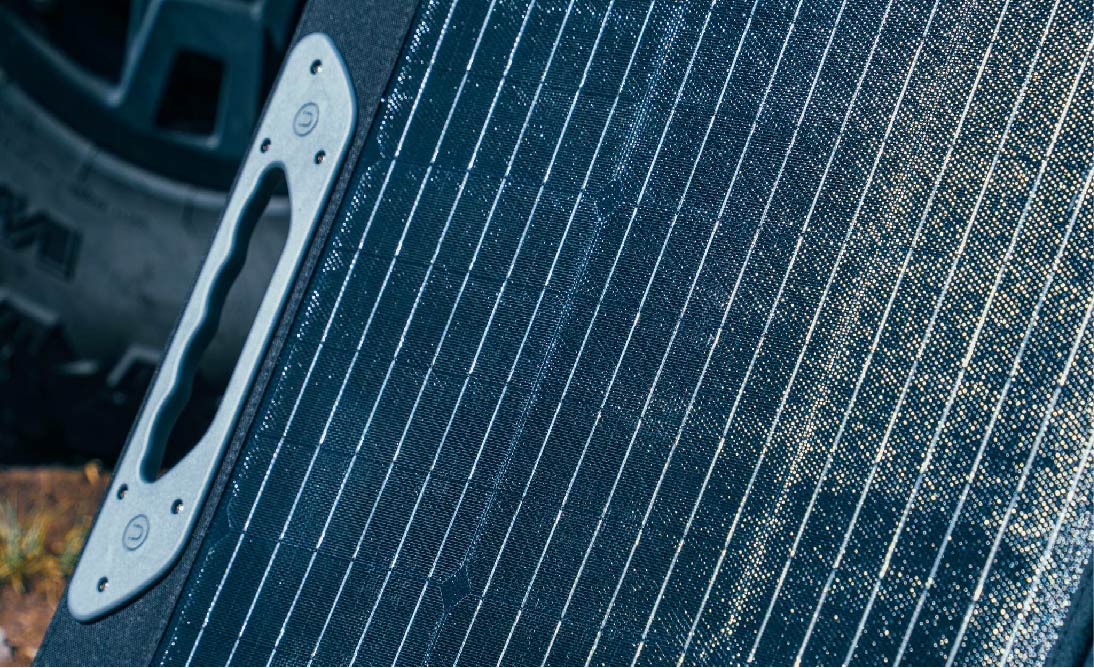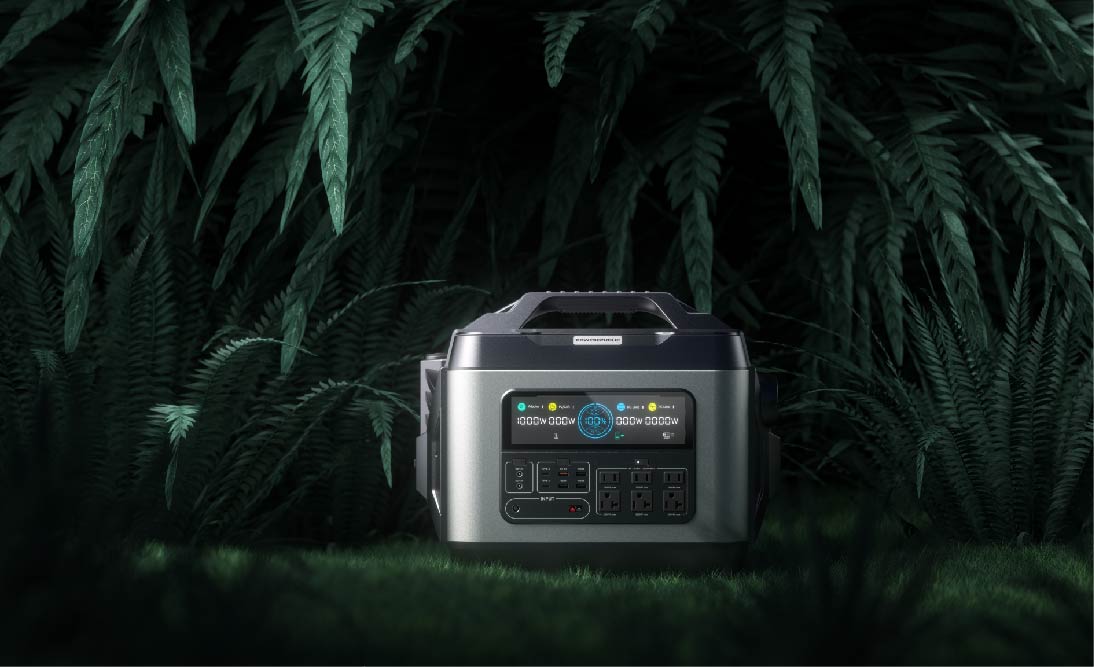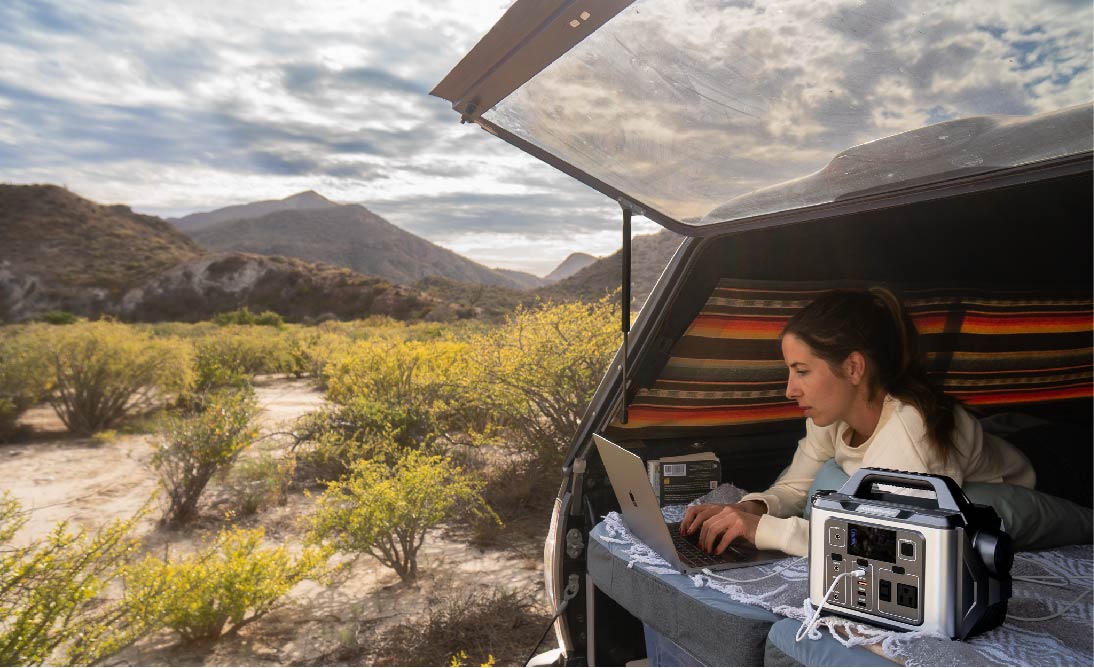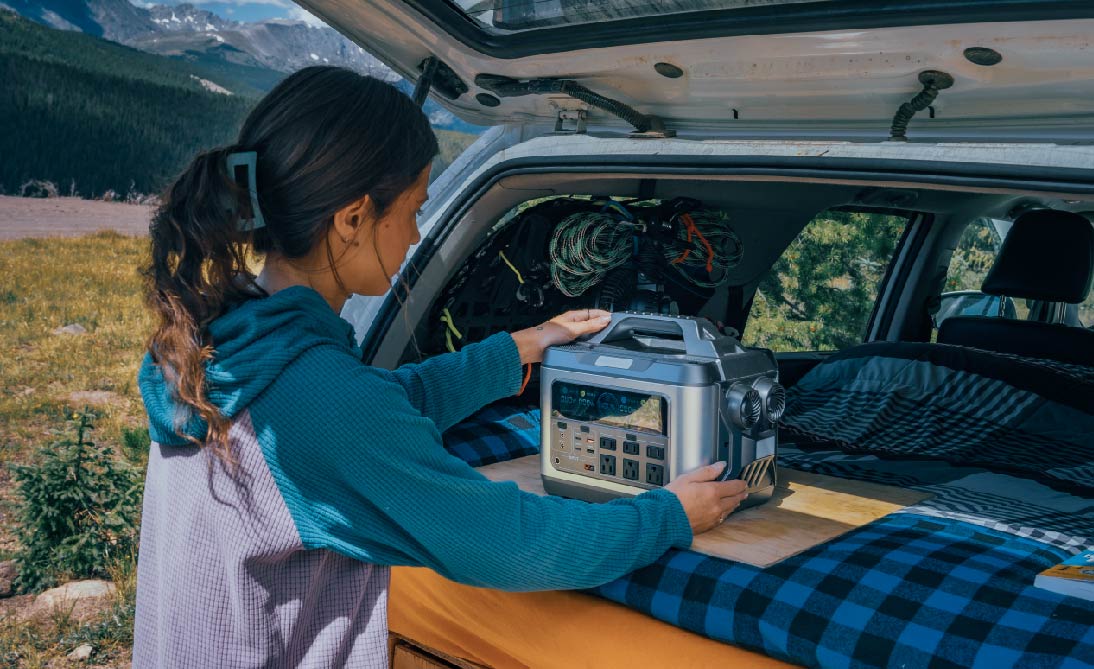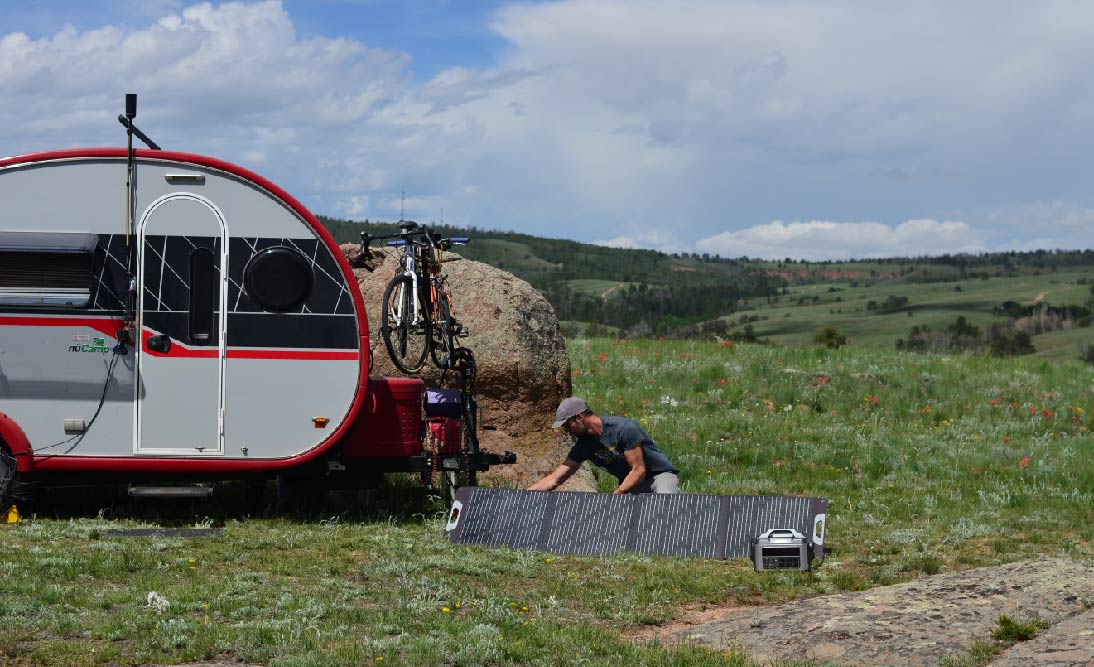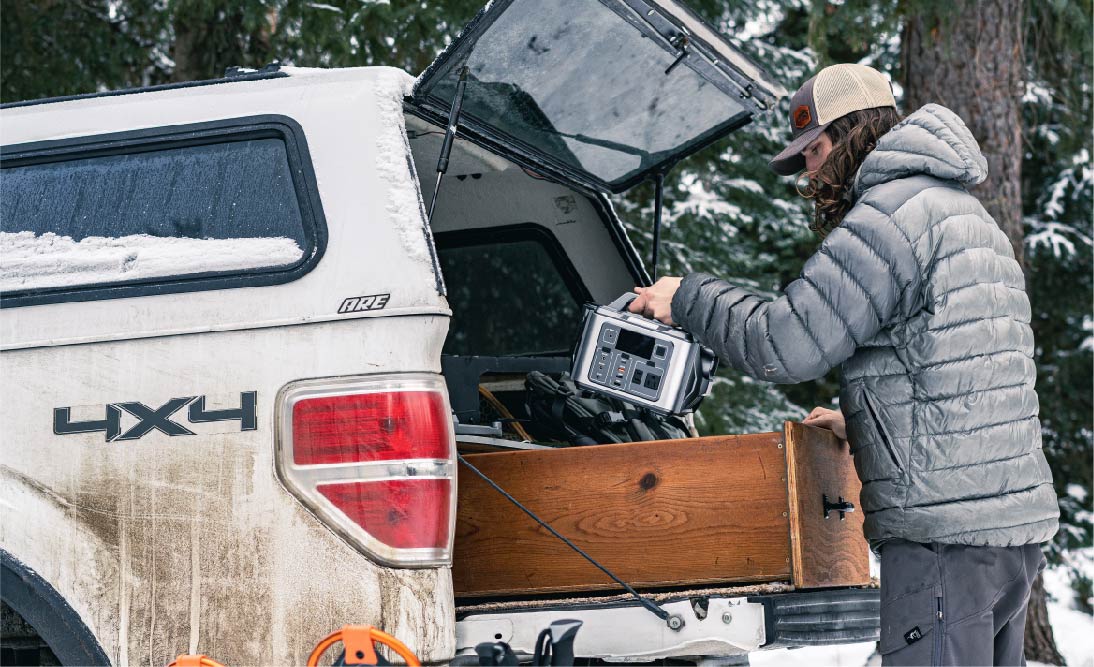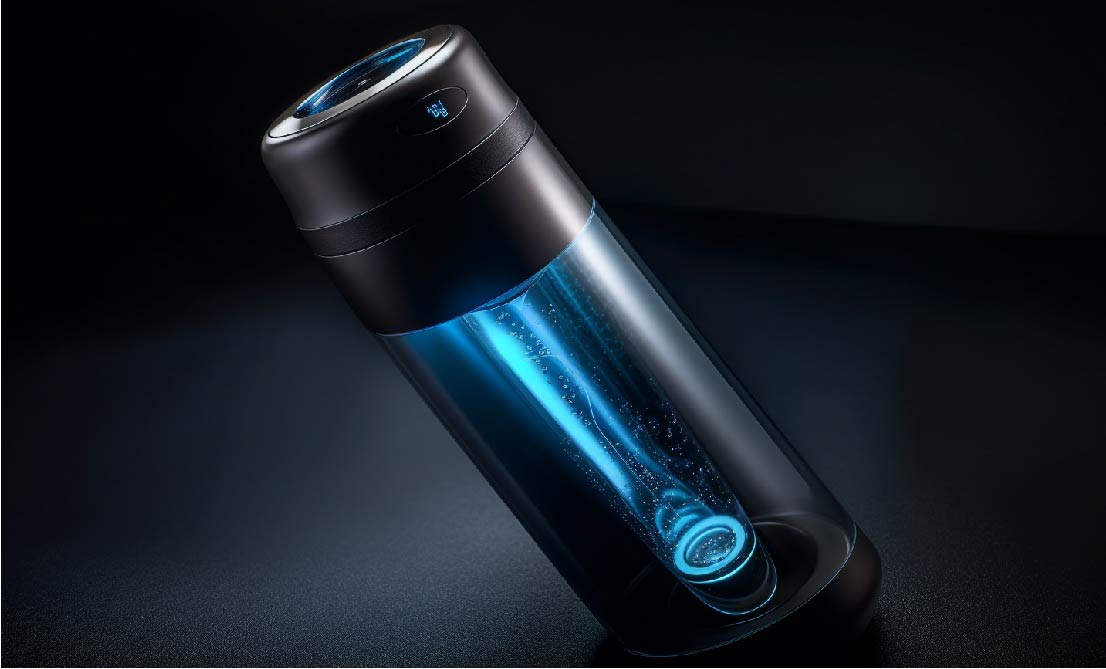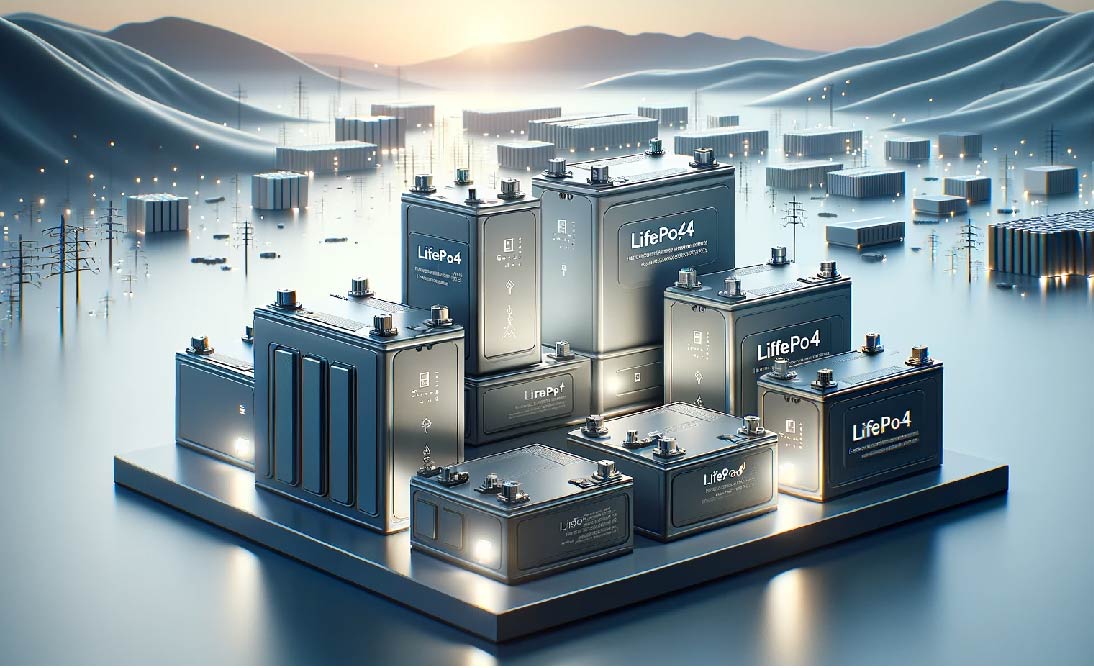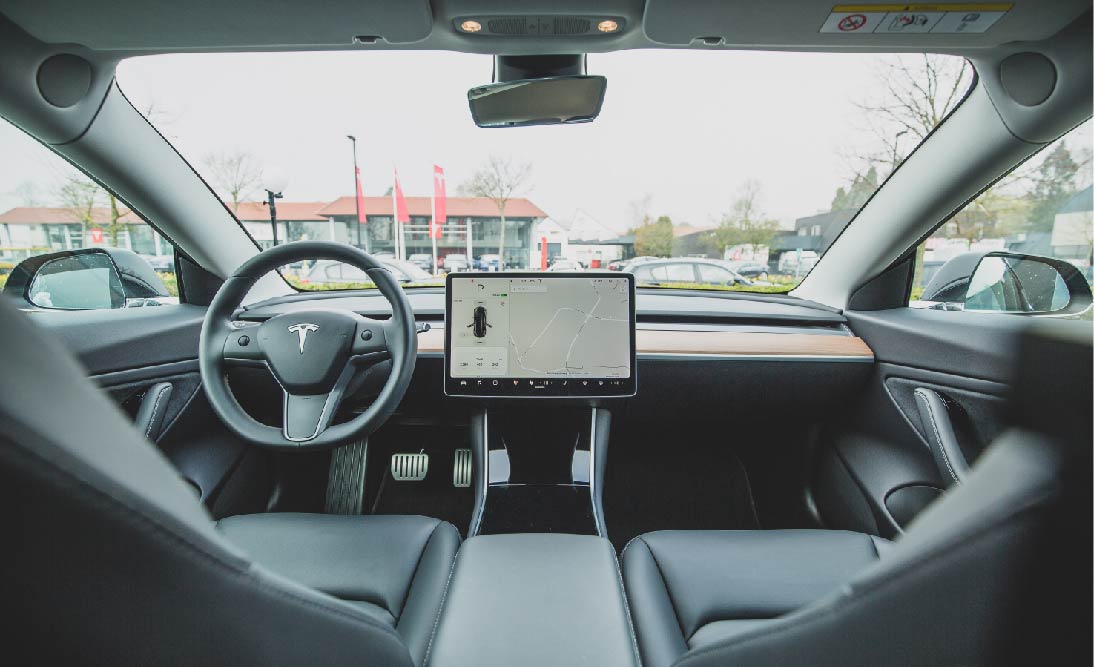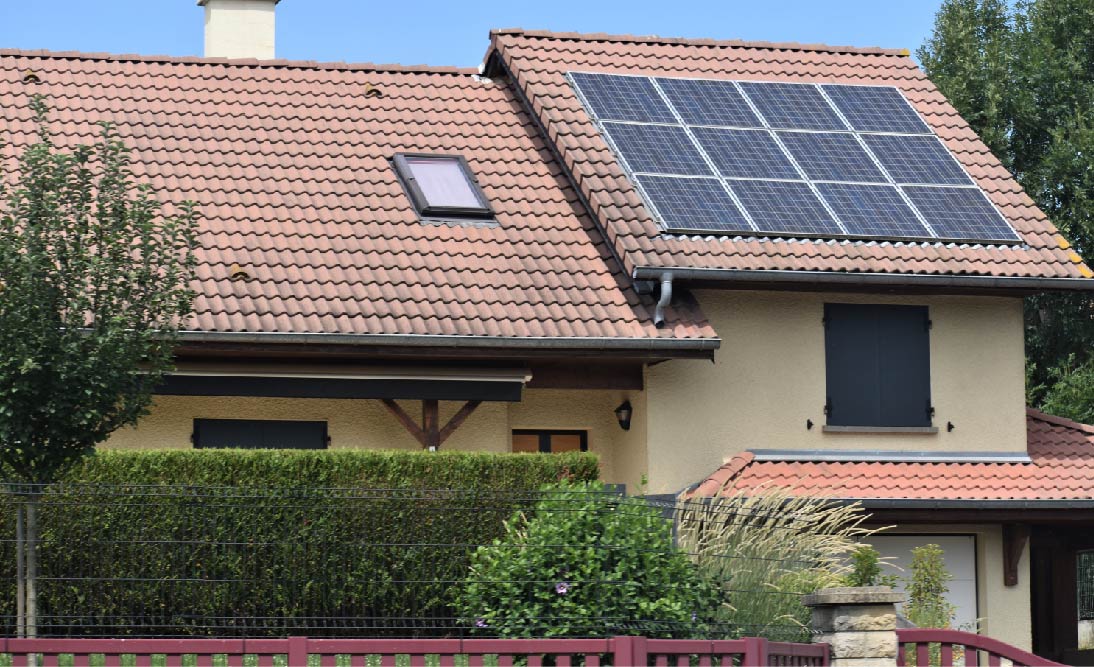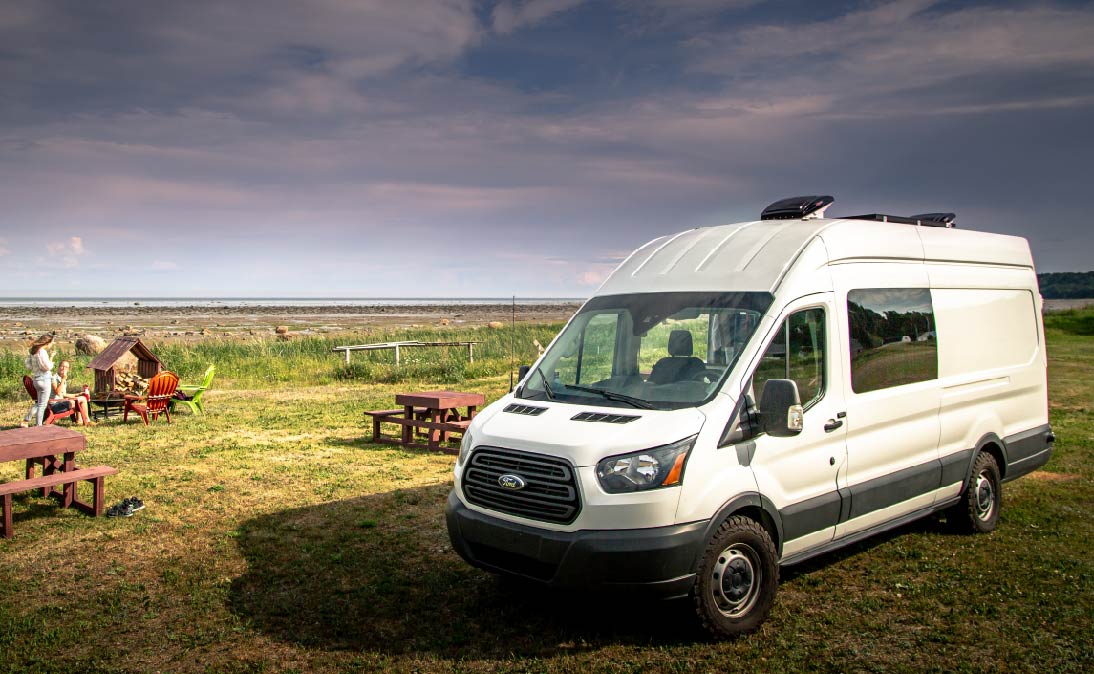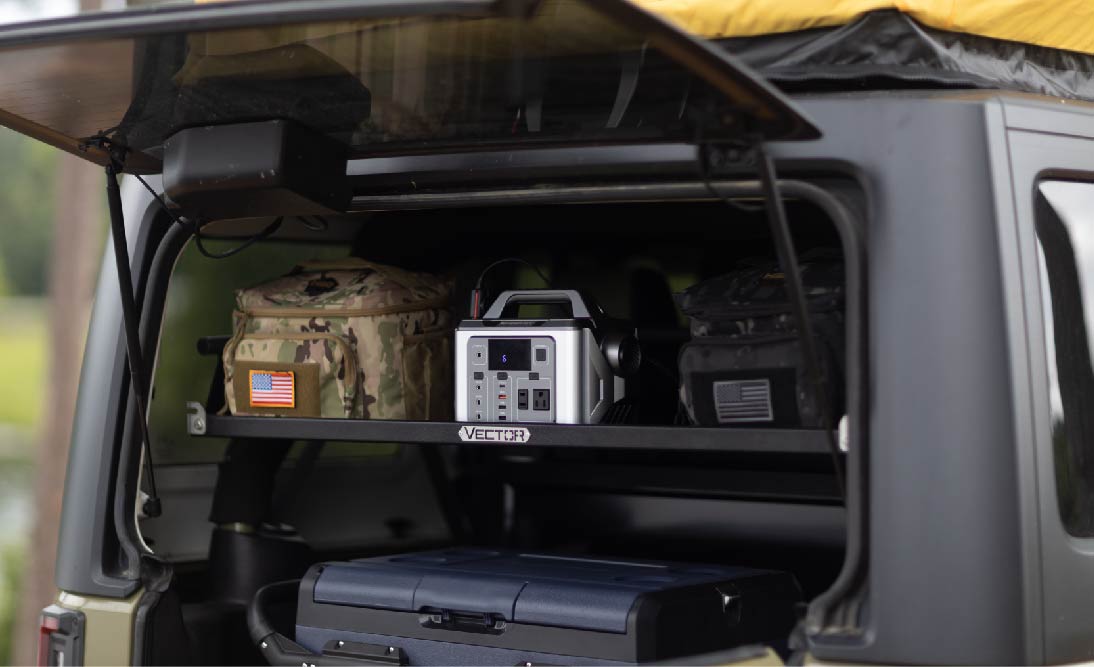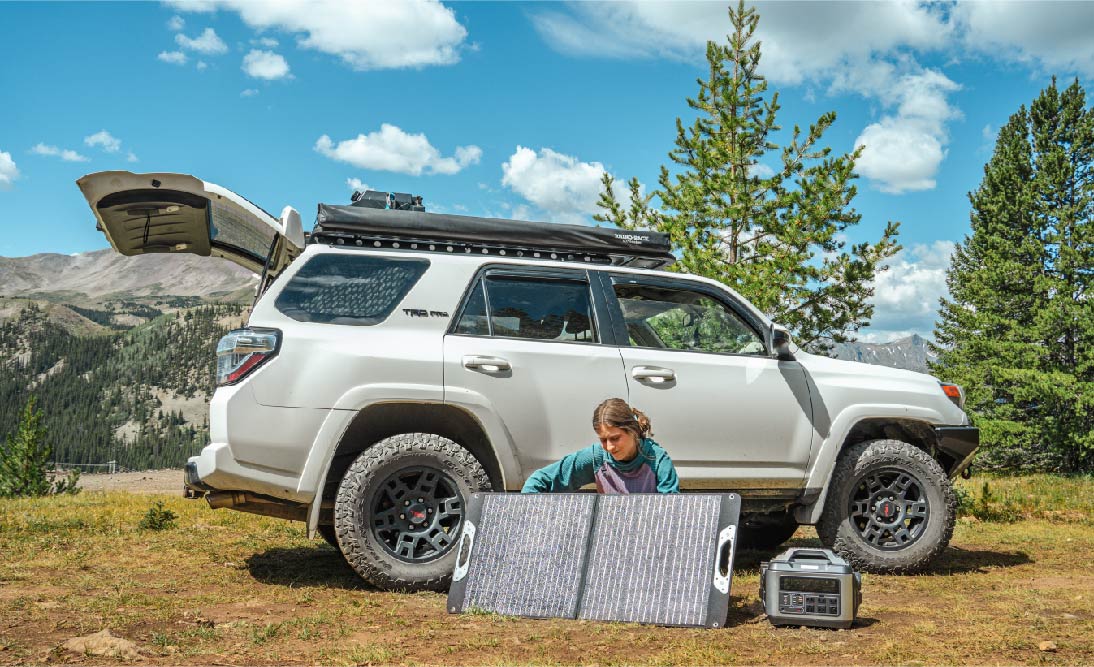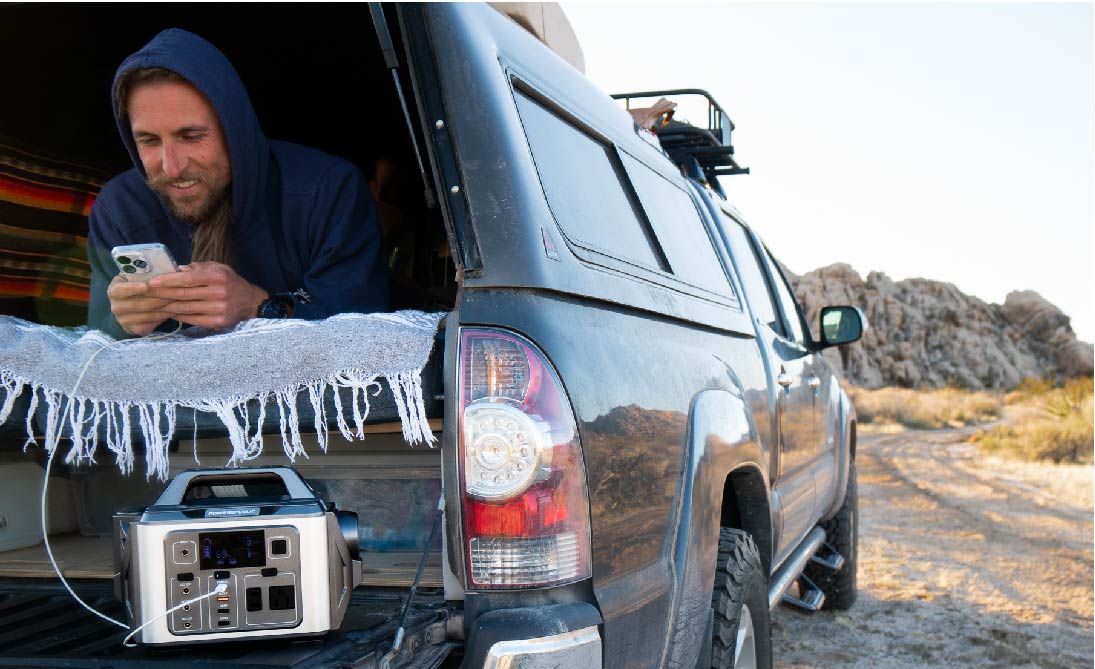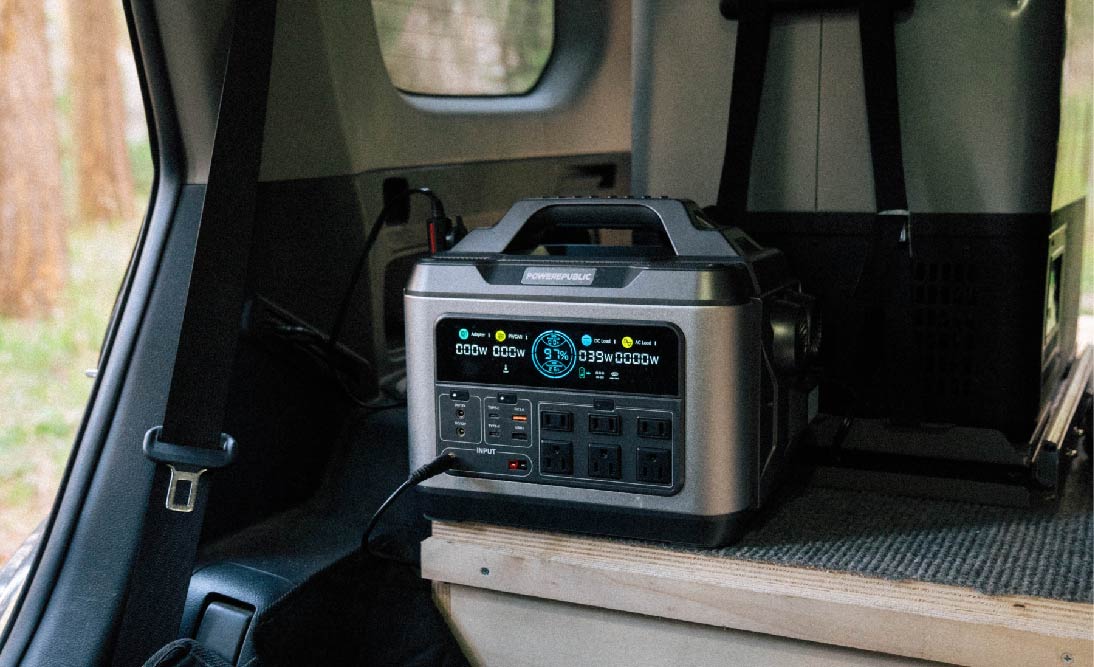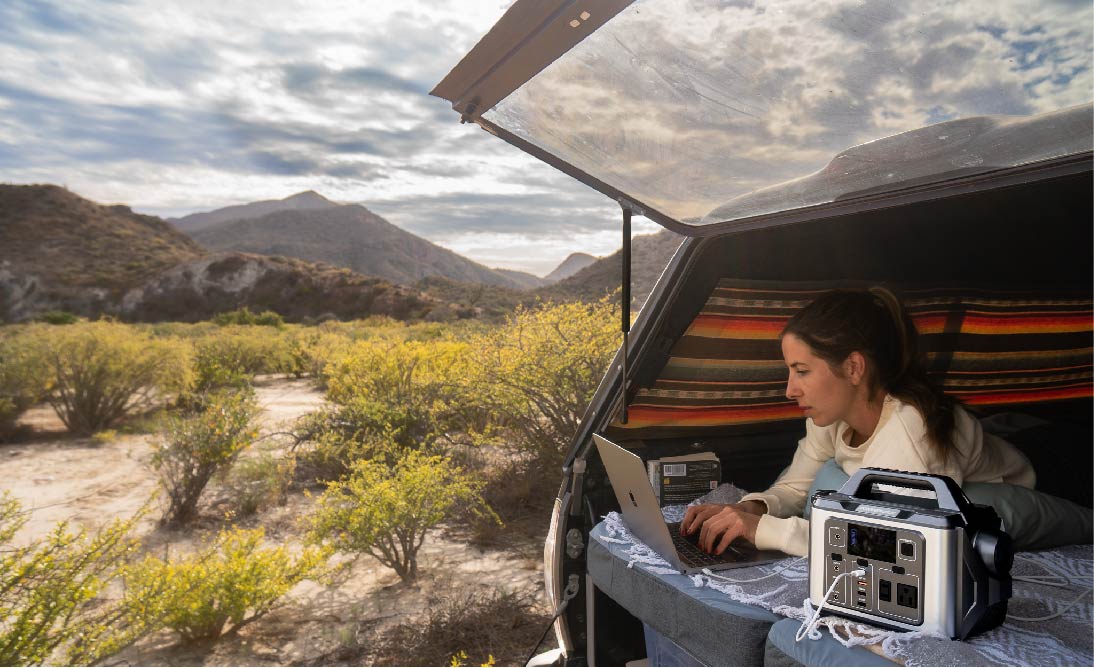Table of Contents:
-
Benefits and Limitations of Using Solar Generators for Off-Gird Living
-
Best Solar Generator For Off-Grid Living: POWEREPUBLIC T1200 Solar Generator
-
Best Solar Generator For Off-Grid Living: POWEREPUBLIC T2200 Solar Generator
-
FAQ II: How To Figure Out the Size of the Inverter For Off-Grid Living?
-
FAQ III: How To Figure Out the Battery Capacity For Off-Grid Living?
-
FAQ IV: How To Figure Out the Size of the Solar Panels For Off-Grid Living?
Living off-grid isn't as glamorous as it may seem.
It requires knowing how to pick and set up a solar generator system based on your power needs, budget, weather, etc. Picking up the best solar generator for off-grid living isn't simple. You'll need to figure out the inverter size, battery capacity, solar panel size, and more. Different solar generator options exist, from portable kits to whole-house generators. So, thinking carefully about what you need to get the right solar generator without spending too much money is crucial.
Solar Generator For Off-Grid Living Overview

Solar generators for off-grid living are reliable systems that harness solar energy to generate electricity, offering a sustainable and independent power source. These generators typically consist of solar panels, an inverter, a charge controller, and a battery.
Before choosing the best solar generator for off-grid living, it is important to have a general idea about what options are available out there for you. Here are the main types of solar generators commonly used for off-grid living:
Portable Solar Generators
-
Description: Compact and easy to move around, portable solar generators are suitable for camping, and outdoor activities, or as a backup power solution.
-
Key Features: Lightweight, built-in handles, often including USB and AC outlets.
-
Price Range: $300 to $1,000 (varies based on capacity and features)
-
Example: An entry-level portable solar generator may cost around $200, while a higher-capacity, feature-rich model can range up to $1,000.
Whole-House Solar Generators
-
Description: Designed to power an entire home, these systems are more robust and have higher capacity components to meet the increased energy demands of a household.
-
Key Features: Larger inverters, higher-capacity batteries, and multiple solar panels.
-
Price Range: $5,000 to $20,000 (depending on capacity and other features)
-
Example: A mid-range whole-house solar generator might be priced around $10,000, while larger capacity or premium models can go up to $20,000.
Solar Backup Generators
-
Description: These generators are designed to provide backup power for essential appliances and systems during grid outages.
-
Key Features: Automatic transfer switch for seamless transition, often integrated with the main electrical panel.
-
Price Range: $1,000 to $6,000 (depending on capacity and features)
-
Example: An average solar backup generator may fall between $2,000 to $3,000, while more advanced models can cost up to $5,000.
DIY Solar Generators
-
Description: Some off-grid enthusiasts prefer building their solar generator systems, and customizing components to fit their specific needs.
-
Key Features: Flexibility in choosing components, requires basic knowledge of solar systems.
-
Price Range: $500 to $2,000 (depending on components and capacity)
-
Example: Basic DIY solar generator kits may start around $500, while more extensive setups with higher capacities and additional features can reach $2,000.
Hybrid Solar Generators
-
Description: Combining solar with other power sources like wind or a backup generator, hybrid systems ensure a more consistent power supply, especially during extended periods of low sunlight.
-
Key Features: Integration with additional power sources, and advanced energy management.
-
Price Range: $2,000 to $11,000 (depending on capacity, additional power sources, and features)
-
Example: A basic hybrid solar generator incorporating solar and wind power may be priced around $2,000, while more advanced models with multiple power sources and smart energy management can cost up to $10,000.
To choose the best solar generator for off-grid living, it's crucial to assess your energy needs, location, and budget. Each type has its advantages, and the right choice depends on the specific requirements of your off-grid lifestyle.
Benefits and Limitations of Using Solar Generators for Off-Gird Living

Before delving into the process of choosing the best solar generator for off-grid living, it's essential to examine the pros and cons of these systems. A clear understanding of these aspects will empower you to make informed decisions.
Benefits of Using Solar Generators for Off-Grid Living
-
Clean Energy: Solar generators capture renewable energy from the sun, offering an eco-friendly power solution for off-grid living, thereby reducing your carbon footprints.
-
Cost-Efficient Power Solution: Over time, solar generators prove cost-effective by reducing or eliminating monthly electricity bills, offering significant savings for off-grid households.
-
Independence and Self-Sufficiency: Solar generators are good for off-grid living by providing an independent energy source, reducing reliance on traditional power grids, and enhancing self-sufficiency.
-
Low Maintenance Requirements: With fewer moving parts, solar generators are low-maintenance, resulting in reduced upkeep costs and a reliable, hassle-free power solution.
-
Silent Operation: Solar generators function quietly and without emissions, promoting a more peaceful and environmentally friendly living space, particularly in isolated off-grid areas.
Limitations of Using Solar Generators for Off-Grid Living
-
Initial Setup Costs: The initial investment for purchasing and installing a solar generator system can be relatively high, posing a barrier to entry for some off-grid enthusiasts.
-
Weather Condition: Solar power is influenced by the availability of sunlight, with reduced efficiency on days without the sun or during the night, necessitating alternative power sources or energy storage solutions
-
Space Requirements: Adequate space is essential, and not all off-grid locations may have sufficient room for optimal power generation, limiting the feasibility of solar energy.
-
Energy Storage Limits: The capacity of the battery determines the duration of power supply during periods of low sunlight, requiring careful consideration of energy storage needs.
Although solar generators have many benefits for off-grid living, understanding these limitations is crucial for a well-informed and successful integration into a sustainable lifestyle and will guide you in picking up the best solar generator for off-grid living.
How To Select The Best Solar Generator For Off-Grid Living?

Picking up the best solar generator for off-grid living involves a detailed assessment of your power needs, location, and budget. Follow these steps for a well-informed decision:
1. Assess Your Energy Needs
-
Calculate your power consumption by listing the wattage of each appliance you plan to power. For example, if you use a 100W refrigerator for 5 hours a day, that's 500Wh.
2. Consider Location and Sunlight Exposure
-
Evaluate the sunlight hours in your location. For instance, if you receive around 6 hours of sun per day, this information helps determine the energy for daily use.
3. Determine Battery Capacity
-
To ensure continuous power during low sunlight periods, calculate the battery capacity by this formula: Capacity (Ah) = Daily Power Consumption (Wh) / System Voltage (V) / Depth of Discharge (DOD).
-
For example, if you need 1500Wh a day, and you're using a 12V system with a DOD of 50%, the calculation would be 1500 / 12 / 0.5 = 250Ah.
4. Size the Inverter
-
The inverter should handle the maximum wattage of appliances you plan to run simultaneously. If your appliances total 800W, select the inverter with a capacity greater than 800W. Also, consider surge power – devices like refrigerators may need more power to start.
5. Calculate Solar Panel Size
-
Determine the solar panel array size by dividing your energy per day by the sunlight available(hours). Use the formula: Solar Panel Capacity (W) = Daily Energy Consumption (Wh) / Average Sunlight(hours).
-
If you need 1800Wh a day, and you receive 6 hours of sun, the calculation is 1800 / 6 = 300W. Therefore, you'd need a 300W solar panel array.
6. Consider System Voltage
-
Choose the system voltage (12V or 24V) based on your needs. Higher voltage systems are more efficient for larger setups.
7. Explore Different Solar Generator Types
-
Consider portable generators for flexibility or whole-house generators for comprehensive power needs. For example, if your off-grid lifestyle involves frequent travel, a portable solar generator might be suitable.
8. Budget Considerations
-
Determine your budget for the entire solar generator system. Keep in mind that quality components may require a higher initial investment but can result in long-term savings.
By following these steps, you'll be able to select the best solar generator for off-grid living that matches your specific off-grid requirements. Always ensure precision in calculations to optimize performance and enjoy a reliable, sustainable power solution.
Best Solar Generator For Off-Grid Living: POWEREPUBLIC T1200 Solar Generator

POWEREPUBLIC offers two reliable options for off-grid living, especially for individuals who travel in their cars, vans, or RVs: the T1200+PV100 and T1200+PV200 solar generator kits.
The POWEREPUBLIC T1200 boasts a 1200W power output, 1110Wh capacity, and 2600W surge power. This makes it capable of charging larger items such as TVs, coffee machines, electric grills, heavy-duty tools for remote working, and more. With 13 different output ports, including 6 AC outlets, 2 Type C ports, 2 DC/12V ports, 1 QC3.0 port, 1 USB port, and 1 Cigarette port, you can power up to 13 devices and appliances simultaneously.
Moreover, the aluminum-alloy body gives our T1200 model durability in the wild, providing a rugged appearance. The T1200 is compatible with either a 100W portable solar panel or a 200W portable solar panel. If you require higher solar input, opt for our PV200. If you have limited space and prioritize portability, the PV100 is the ideal choice.
While our T1200 cannot be used as an Uninterruptible Power Supply (UPS) due to battery limitations, it can provide ample power during outages. For those living in vans, RVs, or cars, the POWEREPUBLIC T1200+PV100 and T1200+PV200 stand out as one of the best solar generators for this off-grid lifestyle.
Best Solar Generator For Off-Grid Living: POWEREPUBLIC T2200 Solar Generator

For individuals living off-grid who seek a reliable power solution capable of handling appliances like hair dryers, microwaves, water heaters, washing machines, refrigerators, and more, the POWEREPUBLIC T2200+PV200 solar generator stands out as one of the best options for these power requirements.
The POWEREPUBLIC T2200 features a robust 2200W power output, 2240Wh capacity, and a 4500W surge power, making it suitable for charging larger appliances, including those mentioned above. Some appliances require a specific amount of power when starting up, and our T2200 can handle this without any issues. With 15 different output ports, including 6 AC outlets, 2 Type C ports, 2 DC/12V ports, 1 QC3.0 port, 3 USB ports, and 1 Cigarette port, you can power up to 15 items simultaneously.
Furthermore, the aluminum-alloy body provides our T2200 model with durability in the wild, giving it a rugged appearance. The T2200 is compatible with our 200W portable solar panel, allowing you to recharge it wherever you roam under the sun. The LiFePO4 batteries of the T2200 offer over 3000 cycles before decaying to 80% capacity, meaning you can charge and recharge the T2200 for 3000 cycles.
Notably, our T2200 can be used as an Uninterruptible Power Supply (UPS), providing ample power during outages for a couple of hours. For those living in vans, RVs, or cars, the POWEREPUBLIC T2200+PV200 stands out as one of the best solar generators for off-grid living.
FAQ I: Can a Solar Generator Power a House?

Answer: Yes, a solar generator can power a house, but the capacity of the solar generator needs to match the energy requirements of the house.
Calculate the daily power needs of your house (Wh) and ensure the solar generator's power output and capacity of the battery meet or exceed this demand.
Example:
-
Determine Daily Power Consumption (DEC) of the house: Suppose your house consumes 20,000 Wh/day.
-
Select a solar generator with a power output and battery capacity greater than 20,000 Wh.
FAQ II: How To Figure Out the Size of the Inverter For Off-Grid Living?

Answer: Determine the maximum wattage of the appliances you plan to run simultaneously.
The inverter size should be larger than this total wattage to accommodate any surge power (starting power) required by certain devices. Ensure the inverter can handle the peak load without exceeding its continuous power rating.
Example:
-
List appliances and their wattages: Refrigerator (200W), Lights (100W), Microwave (1000W), Total = 1300W.
-
Account for surge power (e.g., microwave needs more power to start, assume 1500W).
-
Select the inverter with a continuous power rating above 1500W, ensuring it can handle the peak load.
FAQ III: How To Figure Out the Battery Capacity For Off-Grid Living?

Answer: Calculate the required battery capacity in ampere-hours (Ah) using the formula:
Battery Capacity (Ah) = Daily Power Consumption (Wh) / System Voltage (V) / Depth of Discharge (DOD).
Choose a depth of discharge based on battery chemistry (e.g., lead-acid or lithium). This formula ensures the battery can supply power for the desired duration.
Example:
-
DEC of the house = 20,000 Wh (from FAQ I example).
-
Choose a system voltage (e.g., 12V).
-
Assume a Depth of Discharge (DOD) of 50%.
-
Battery Capacity (Ah) = 20,000 Wh / 12V / 0.5 = 3,333.33 Ah.
-
Consider practical battery capacities available on the market (e.g., 300Ah).
FAQ IV: How To Figure Out the Size of the Solar Panels For Off-Grid Living?

Answer: Determine the daily power consumption(Wh) and the sunlight hours per day in your area. Use the formula:
Solar Panel Capacity (W) = Daily Energy Consumption (Wh) / Average Sunlight(Hours).
This calculation provides the minimum solar panel capacity needed. Consider factors like efficiency losses and seasonal variations for more accurate sizing.
Example:
-
DEC of the house = 20,000 Wh (from FAQ I example).
-
Assume an average sunlight duration of 5 hours/day.
-
Solar Panel Capacity (W) = 20,000 Wh / 5 h = 4000W.
-
Consider efficiency losses (e.g., 80% for lead-acid batteries).
-
Actual Solar Panel Capacity = 4000W / 0.8 = 5000W.
Final Thoughts
Picking up the best solar generator for off-grid living involves a comprehensive understanding of energy needs, location, and budget. Consideration of various solar generator types, from portable to whole-house systems, allows for tailored solutions. Each type comes with distinct features and price ranges. For example, portable solar generators, ideal for outdoor activities, range from $200 to $1,000. In contrast, whole-house systems, designed for comprehensive household power, can cost between $5,000 and $20,000.
To select the best solar generator for off-grid living, assessing energy needs, and calculating battery capacity, inverter size, and solar panel capacity are crucial steps. POWEREPUBLIC solar generator kits exemplify suitable off-grid options, catering to diverse power requirements. DespiSolar generators offer clean, cost-efficient, and sustainable energy despite initial setup costs and weather-related limitations independence, and low maintenance for off-grid living.
